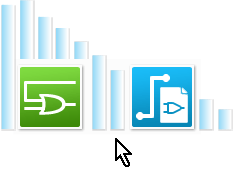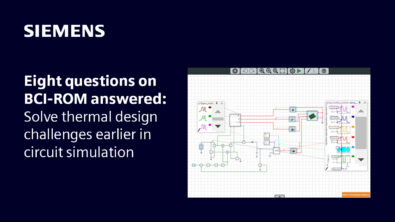PADS Logic vs. xDX Designer? – When YOUR Use Case Changes
Since the release of PADS VX there have been some great questions regarding the integrated project use of xDX Designer and notably, no mention of PADS Logic. In this blog I’ll explore some of today’s typical use cases for each of these front-end tools.

PADS Logic is a well-established and reliable front-end tool of choice for many ECAD engineers and has been so for many years and for good reasons. Today’s typical PADS Logic user spans from the single user, to design bureaus, to small businesses and even some large companies. These PADS Logic users find that its functionality and features always have been and continue to be sufficient in getting their types of PCB design jobs done.
Nowadays PCB’s are everywhere; from the keyboard I’m using to type this blog, to the appliances in my kitchen, to the musical greeting card that I purchased for my father for father’s day. The reality is, not all PCB designs are cutting edge, high-speed, heavily constrained, high-tech nor compact.
In two recent conversations that I’ve had, one with a leading power supply manufacturer, and the other with an electronic water meter company, the need for, and cost of more powerful and integrated PCB design tools was not immediately necessary. Each of these companies made many different 2, 4 and occasional 6 layer PCB’s, their expertise, experience, existing design collateral and liberal form factors have continued to make their PCB designs achievable with their current tools. In many cases, design changes for their products occurred when the product requirements changed, when components became unobtainable or components were replaced with newer surface mount packages. There are hundreds of companies like these, which find PADS logic is still sufficient for their work. This scenario reminded me of a saying that goes something like “why use a sledgehammer when a hammer will do the job?”
Today, more and more PCB’s are requiring some degree of high-speed, constrained and compact circuitry. Many companies, even those that have stated that PADS Logic “gets the job done” have found that changes in technologies, components, capabilities and even pressure from competitors have required them to change the way they design their products and the tools that they design their products with.
Recently, the electronic water meter company that I mentioned earlier is in the process of designing a new line of meters that will include some updated technology that includes an RF transmitter, similar to what we see today in residential water meters. These types of changes are frequently the catalyst for ECAD teams to consider and employ an advanced front-end tool like xDX Designer that is fully integrated and provides access to signal integrity analysis features and centralized constraint management that is accessible throughout schematic capture, layout and routing.
Is your next design start a perfect candidate for xDX Designer? To learn more about how database synchronization between the schematic and layout works with the PADS VX release, click here. To see how easy creating a new schematic in xDX Designer is, click here.
Comments
Leave a Reply
You must be logged in to post a comment.



I’ve been a layout guy since 1982. I’ve been using PADS since “PADS Perform” days. It has always been an amazing layout tool and has only gotten better through v9.5. I remember the days when there would be local user group seminars in major metro areas at least once a year. I used to look forward to “What was new”. We gave our feedback and it seemed to have an effect. Many of us were concerned when Mentor bought PADS, that the focus on development would shift from “Layout” to “System”. DxDesigner seemed to bear that concern out. And now with the VX system, it seems even more focused on the overall internal system and less on PCB layout. You should know that MANY of us old layout guys never touch a schematic. Our customers do. They provide us with a net list. We might recommend changes, but we never modify the customer’s circuit. VX’s focus on “instant notification” of violations and changes is not useful or important. (to us) There has not been a single upgrade to PADS Layout since v9.5 (Issued in 2012) ALL of the development resources have been in DxDesigner. It seems the Layout tool has peaked. It might be an interesting exercise to poll Mentor Layout users to find out what percentage actually use schematic capture and what tool is used. Do they actually create the schematic or do they get it from their customer?
Since PADS 9.5, we have indeed concentrated on delivering a complete and tightly integrated “system”. An ever-increasing number of users are doing more than layout and the VX release is of great value to them. Yet, we continue to update PADS 9.5 with quality improvements (Update 2 was just released), and will add new capabilities in layout and improve ease of use of all aspects of the system in upcoming releases.
Mike Griesbach
PADS Product Line Director
If you are doing high speed design, it’s important to really understand the schematic and the circuit overall, to know how to properly route things for signal integrity and EMC. So I would disagree with Paul’s comment, unless you are talking about simple, slow, or less modern circuit designs.